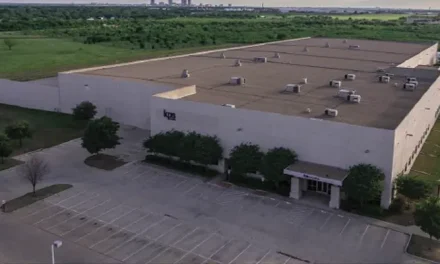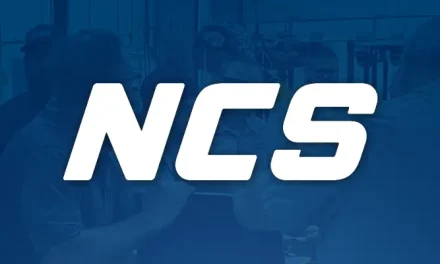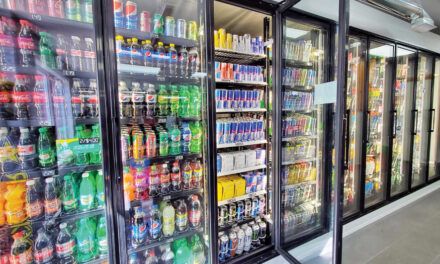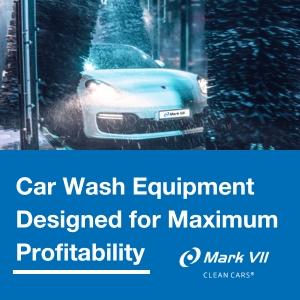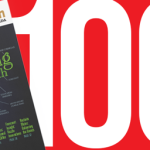
Mobile Apps – Contactless, Curbside and Going Digital
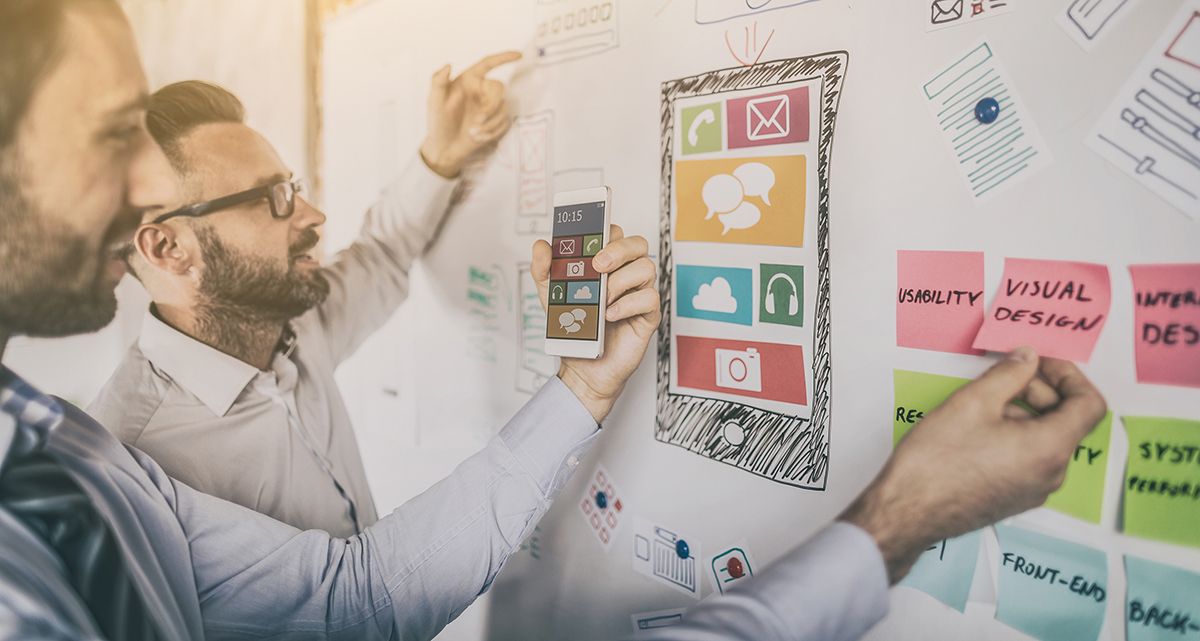
Mobile Apps – Contactless, Curbside and Going Digital
By Angela Altass
Online sales, curbside pickup and loyalty programs are all top of mind for consumers who are used to taking out their phones and tapping on mobile apps. Navigating the world of mobile application development can be confusing and reaching out for help in deciding what route is best for your business is a good idea.
“Right now, doing business as usual is hard,” says The Ultimate Convenience Store Playbook, a guide to creating a seamless digital customer experience, created by Mobiquity. “We created this ebook to help leaders in the convenience industry move forward in a world that has drastically changed.”
Rapid digital adoption, a result of COVID-19, has forever changed the way that consumers interact with retailers, states Mobiquity. “People now expect digital tools from their favourite brands, forcing companies to go digital or go home. In the race to innovate, c-stores are best positioned to win.”
In a recent Mobiquity survey, 50 per cent of respondents reported using an app to order groceries and 62 per cent used an app to order food, while 15 per cent said they had begun using a mobile app to purchase gas.
“The need for convenience stores to implement digital experiences has been fast-tracked,” notes the playbook. “As consumers set a new bar for convenient, contactless experiences, c-stores are in an ideal position to be the number one destination for one-stop personal shopping and automotive refueling.”
Convenience store customers already go to these stores expecting a convenient experience, says Britt Mills, senior director, customer experience, Mobiquity.
“C-store customers expect certain things,” says Mills. “In an app, in a scan-and-go or order-ahead scenario, people can browse, purchase and transact all within an application or a website. We are seeing loyalty programs becoming more sophisticated. If a convenience store has a loyalty program, their app should really be the hub of it to be the most successful. Using the data gathered from the program, you can personalize offerings. Customers expect that if you are collecting their data and they are continuing to come back to your store, you should know what they want. For example, if you know that I come every single morning on my way to work to get a cup of coffee, it would be a nice surprise to send out a push notification to say hey, we’re excited to see you this morning, would you like to order your coffee ahead so you can just grab it and go? It’s those type of things that customers are looking for and are driving five-star experiences nowadays.”
Payments Canada recently released data that shows that since the onset of COVID-19 Canadians are maintaining a digital-first mindset with continued preference for contactless payment methods. In Payment Canada’s Canadian Spending and Purchase Habits Have Not Yet Returned to Pre-Pandemic Preferences research, 44 per cent of Canadian survey respondents say that the pandemic has changed their payment preferences to digital and contactless long-term.
“In this most recent research, about 60 per cent of Canadians report that they continue to spend less than before the pandemic,” says Tracey Black, president and CEO, Payments Canada. “Businesses across Canada are focused on how to best meet consumer needs as the pandemic continues. For many retailers, this includes building and leveraging an online presence and offering convenient and secure payment options for customers at point-of-sale.”
When it comes to food delivery services, 29 per cent of Canadians report using services such as Uber Eats and Instacart more often than pre-COVID-19 and 48 per cent of Canadians are using e-commerce platforms more often than pre-pandemic, according to Payments Canada. Commonly purchased items include clothes, household items, food and groceries, and health and beauty products.
“The COVID-19 pandemic has highlighted the convenience of everything digital, from video conferencing, on-demand entertainment, to digital payments,” said Black.
Consumers expect a seamless and intuitive digital experience, says Mills.
“When we look at the convenience store space, whether in Canada or the United States, the consumer expects the same experience,” says Mills. “We can help focus on the big picture and the problems that need to be solved to create a good customer experience.”
There are plenty of examples of random apps of mobility where a brand is trying to get something into the marketplace without really understanding their customers, says Mills.
“They know the features and functions that they want as a brand but they don’t understand their customers’ needs and how their business and store associates are going to sustain the process,” says Mills. “We not only help with the development and design of a good mobile app experience but also offer the strategy and roadmap of how to turn it onto a growing, evolving asset and experience for your business and your customers.”
Smaller stores or chains with a minimal set of stores could be at an advantage, notes Mills.
“We tend to see that those brands have a better connection with their customers with more trust and personality,” she says. “Being able to translate that into the digital space we see as being a lot more effective because they can really put their footprint on their brand differentiation within their market and with their customers. Whether they have websites in place or are just starting off and want to dip their toe into the mobile space, we always start with the customer and make sure we define what they need.”
Research is key to finding out what your customers’ needs are, says Mills.
“If you already have something in market, we can do an assessment of the customer experience involving focus groups and looking at data qualitatively and quantitatively,” says Mills. “It’s one thing to get into a room with a bunch of stakeholders and ask what do you want to build but we’ve learned over the years that you are not your user and there’s usually a big misalignment between what customers actually expect and what businesses think they want.”
Get an internal alignment on what your customers want and the journey they are going through online and offline and how a digital solution could enhance your in-store experience or be a complement for a store experience or after-store experience, advises Mills.
“It’s custom for each client,” notes Mills. “We have a way to validate and prioritize ideas, starting with the customer but always having to tie it back to the business at some point making sure we have things in place, such as ROI models, to help us prioritize what would be the greatest impact to the business as well as meeting with operations to make sure they can sustain and scale it without breaking the experience that the customer is used to having.”
If you are trying to get online quickly due to the pandemic situation, Mills advises being up front with customers regarding expectations.
“Let your customers know that you are continuing to evolve and enhance the experience and that you welcome their feedback,” says Mills. “I think customers are a little more lenient nowadays and realize that everyone is reacting and trying to keep everyone safe and healthy and contactless as much as possible. You have this opportunity now whereas you might not have had that luxury a year ago. I think setting expectations with customers on what you are able to do today and how you are planning on evolving that experience for them is important.”
Consumers will continue to use apps and digital platforms after the pandemic, says Mills.
“For example, my grandmother, who would have never used Instacart to purchase groceries has used it now because she was forced to when she wasn’t able to go to the grocery store,” says Mills. “The way she used Instacart is different. She doesn’t trust the search bar and she wants to go page by page to browse everything but now that she had used it six or seven times she enjoys the convenience. I believe that my grandmother will continue to use Instacart after the pandemic because of the convenience that it brings and not necessarily because she has to.”
Convenience stores can get a lot more exposure for their business by making a mobile app, says Sherwin Niktash, project manager, Elegant Designs.
“Stores are able to provide more services, such as subscription-based sales, where customers can get some type of goods each month,” notes Niktash. “Every business is different so it is hard to generalize but everything is going online now. Some convenience stores are going out of business and one of the reasons is because they don’t have online exposure. Nobody knows about them, what they are selling or what price they are selling it at. It’s not like it was 10 years ago. Nowadays you can’t just place an ad in a newspaper as your marketing plan.”
Niktash advises people to do their research before hiring an app developer and check out reviews online.
“If you don’t already have an online presence, this is the best time to get one because that is how most businesses are surviving right now,” states Niktash. “If you don’t get into it now, it may be harder to get into it later because right now more people are online, working from home, with greater exposure to online platforms.”
Boris Dehtiar, account manager, 247 Labs, advises convenience store owners to move cautiously when considering creating a mobile app.
“Small businesses do have to be online but they don’t have to have a mobile app,” says Dehtiar. “Everything you can do on a mobile app, you can do on a website. The difference is in costs and the way it looks and behaves and the complexity of how long it takes to create it. A mobile app is convenient and cool but you have to remember that you need to have the budget for it.”
He also says that business owners should be careful about the company they choose to build a mobile app.
“Unfortunately, our industry is not regulated and there are many people out there who are fake,” he states. “We have seen people spend thousands of dollars on something that doesn’t work. Then they come to us to fix it. If you are not online at all, you can begin by working with a student who would appreciate the opportunity for the experience but I would advise that you know first what features you want and what your expectations are.”
If you have a small business and do want to consider developing an online presence, Dehtiar suggests using a template.
“You pay about $3,000 for a setup fee,” he notes. “You don’t own the app; it is licensed to you and it’s your company’s version of the app. There are different pay structures involved that can include commission fees so you have to be careful and read the fine print of the contract. You also have to be careful with the data. Where do they send the data and who owns it? How is the data managed and where is it sitting?”
247 Labs builds custom apps, some of which are in the $16,000 to $20,000 price range, says Dehtiar.
Building an app takes time and mobile apps require a change in behaviour so you need to ask yourself whether you think your customers will actually download another app and learn how to use it, says Dehtiar.
“The number of apps being created is ridiculous and people can get fed up,” he cautions. “What people are going for now is one app that does multiple companies. Joining in with an existing app where there is already a user base can save yourself a lot of headaches. With convenience and carwash, it has to be very localized and be targeted at the people who are travelling by the store.”
Since the start of the pandemic, there has been an increased interest in mobile apps, but that doesn’t always proceed into action, notes Dehtiar.
“Everybody wants it – whether it is an updated website or delivery capability or a mobile app – but the pandemic also has a negative impact on the economy and money counts, especially for small businesses, so when people find out the price involved they may not be able to proceed,” he says. “There are a lot of people who are very excited about the idea and then they realize there is a lot of work that goes into it.”
The Mobiquity playbook states that 54 per cent of consumers agree that when the pandemic passes, they will prefer the convenience of using their mobile phones to pay for gas and 60 per cent of consumers say they will prefer to use a mobile app to reduce the number of things they touch in their daily lives.
“Prioritizing the experience over cost can seem counterintuitive but the denominator is efficiency for your consumer,” says Mike Welsh, chief creative officer, Mobiquity. “Experience optimization is critical but this is not the time to cut spending to your digital efforts. That would be the death of your business entirely. Rather, explore the experiences that offer the greatest impact to your business and invest in those.”
Contactless and curbside pickup are all the buzz words of today’s shopping experience. If you haven’t figured out a solution to offering these options to your customers yet, it’s time to up your game by taking a long look at the digital opportunities that will work for you and help keep you in business.

